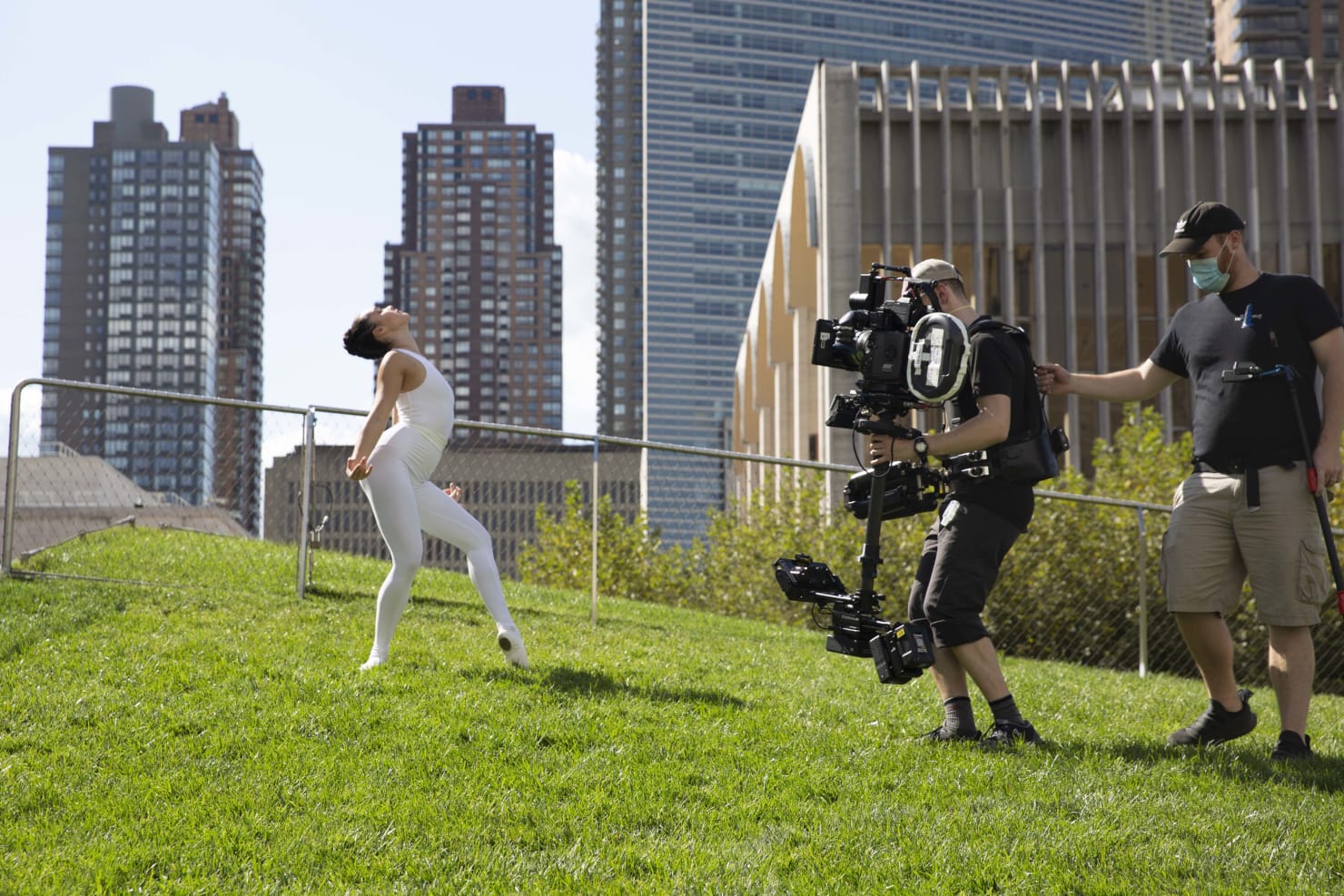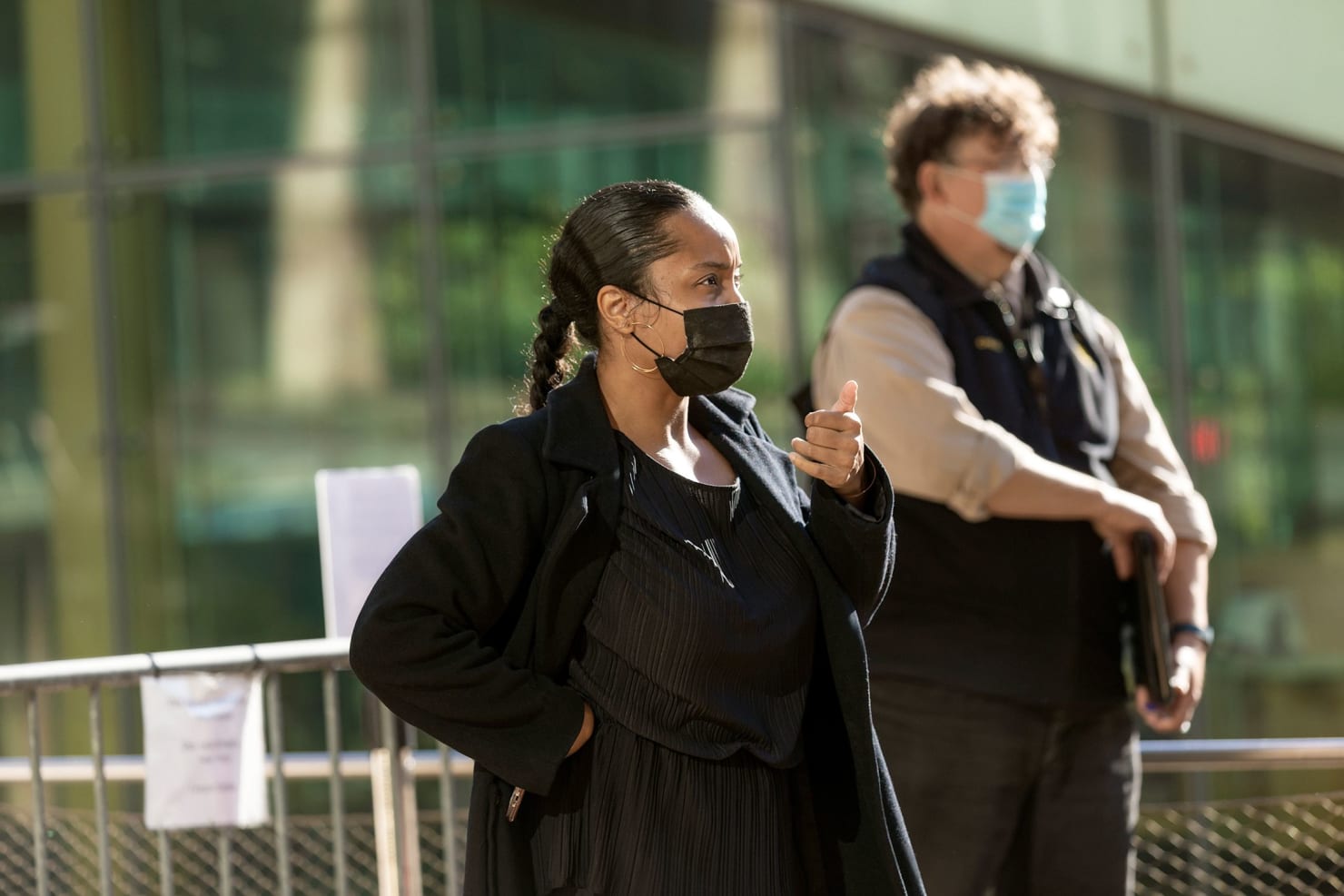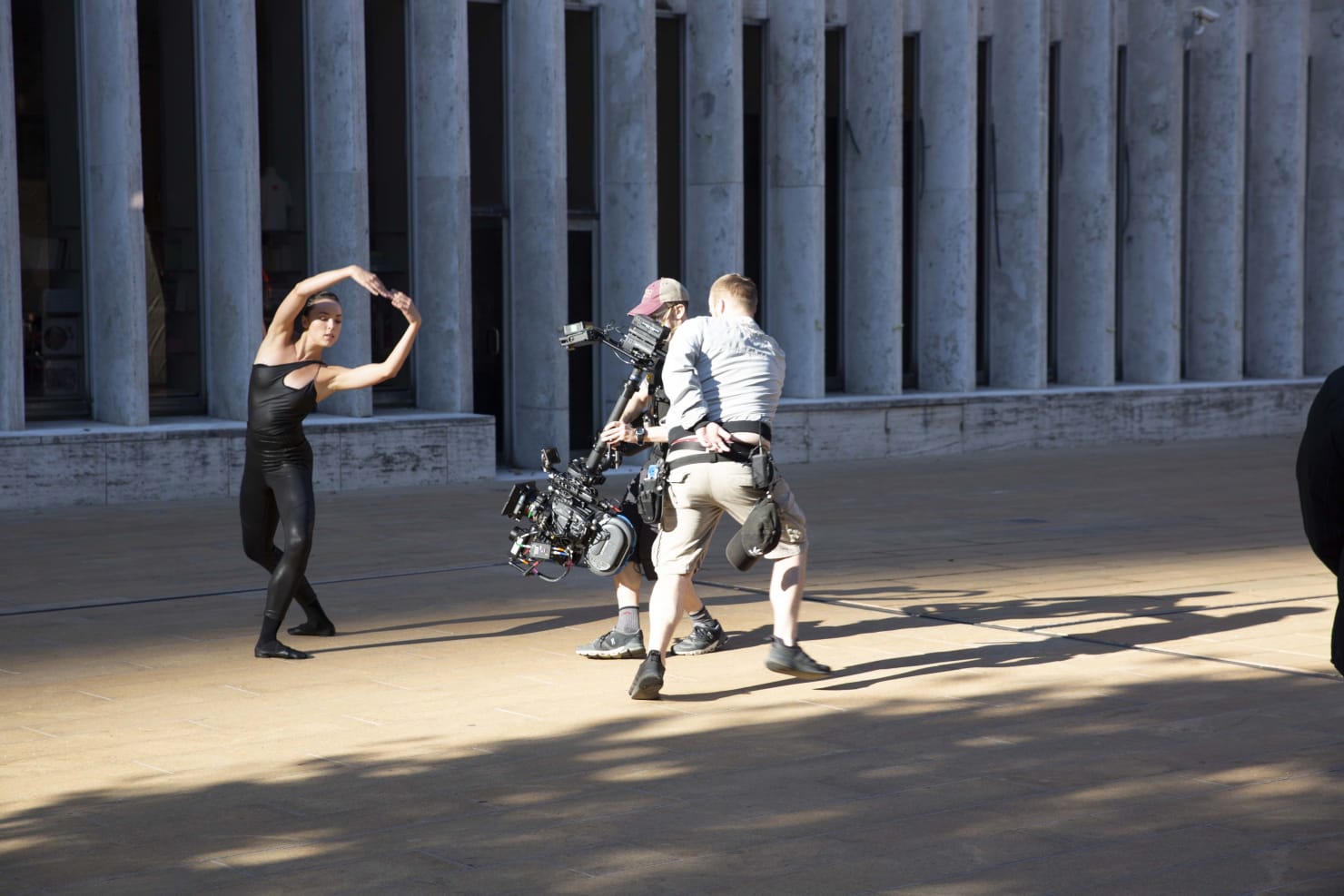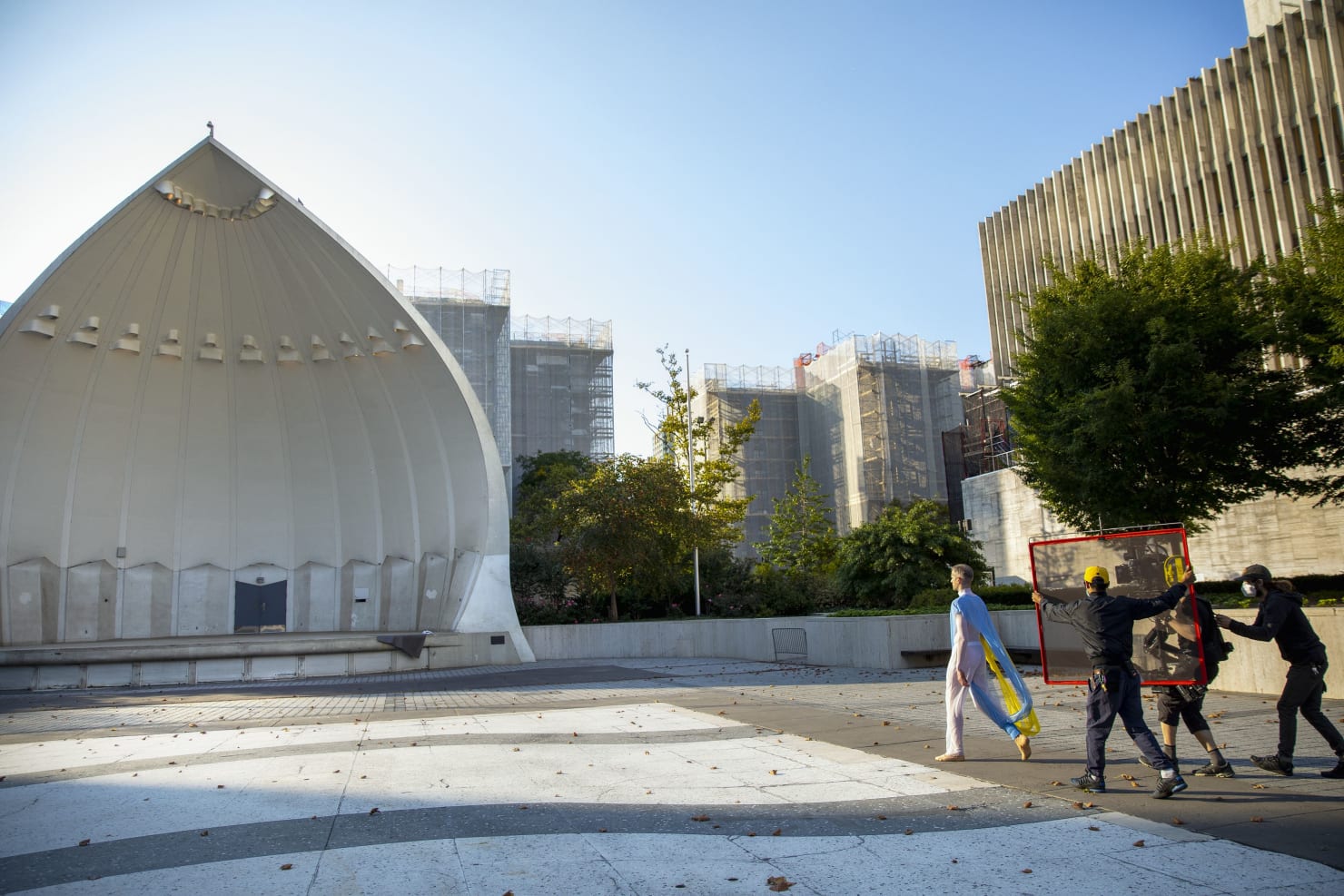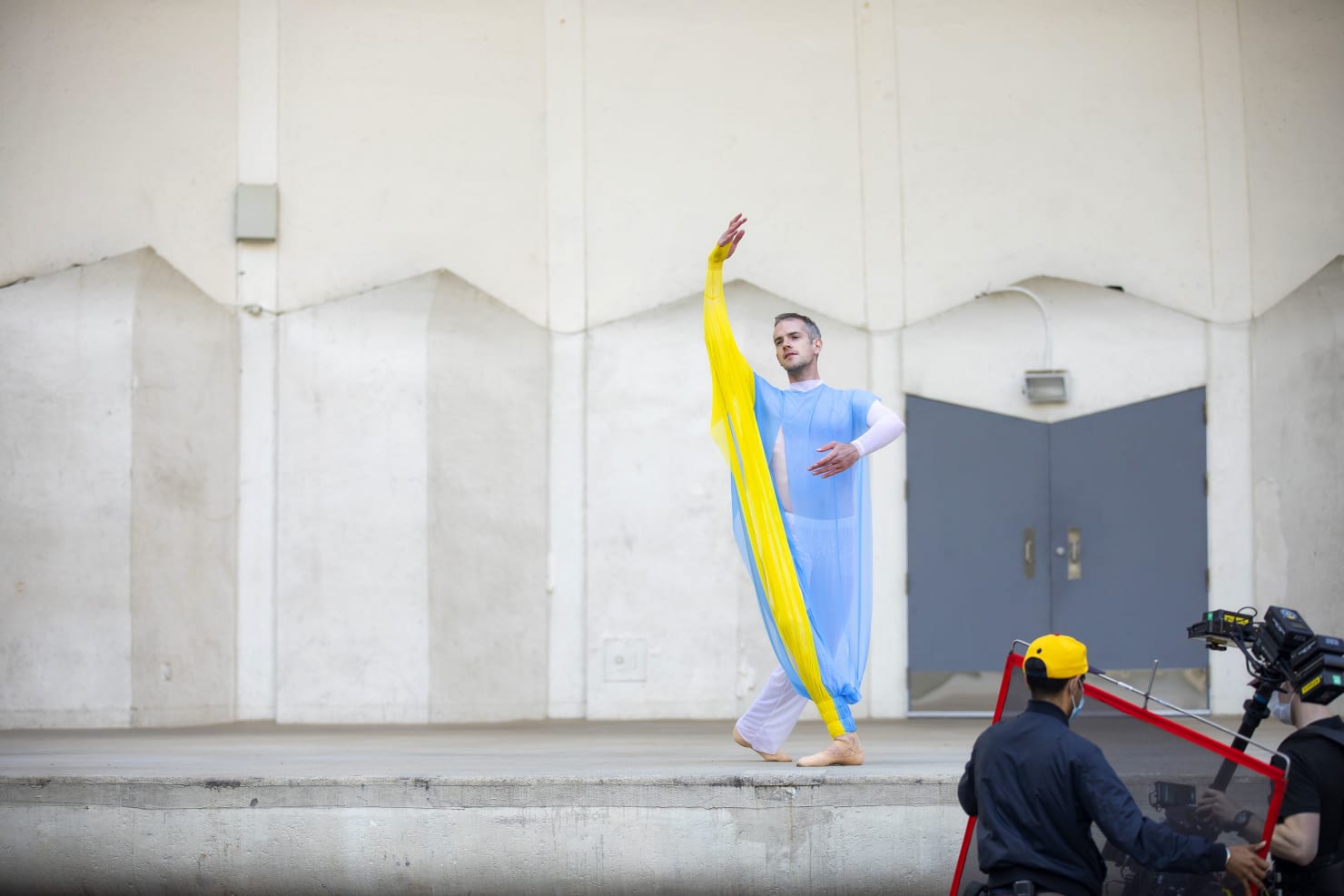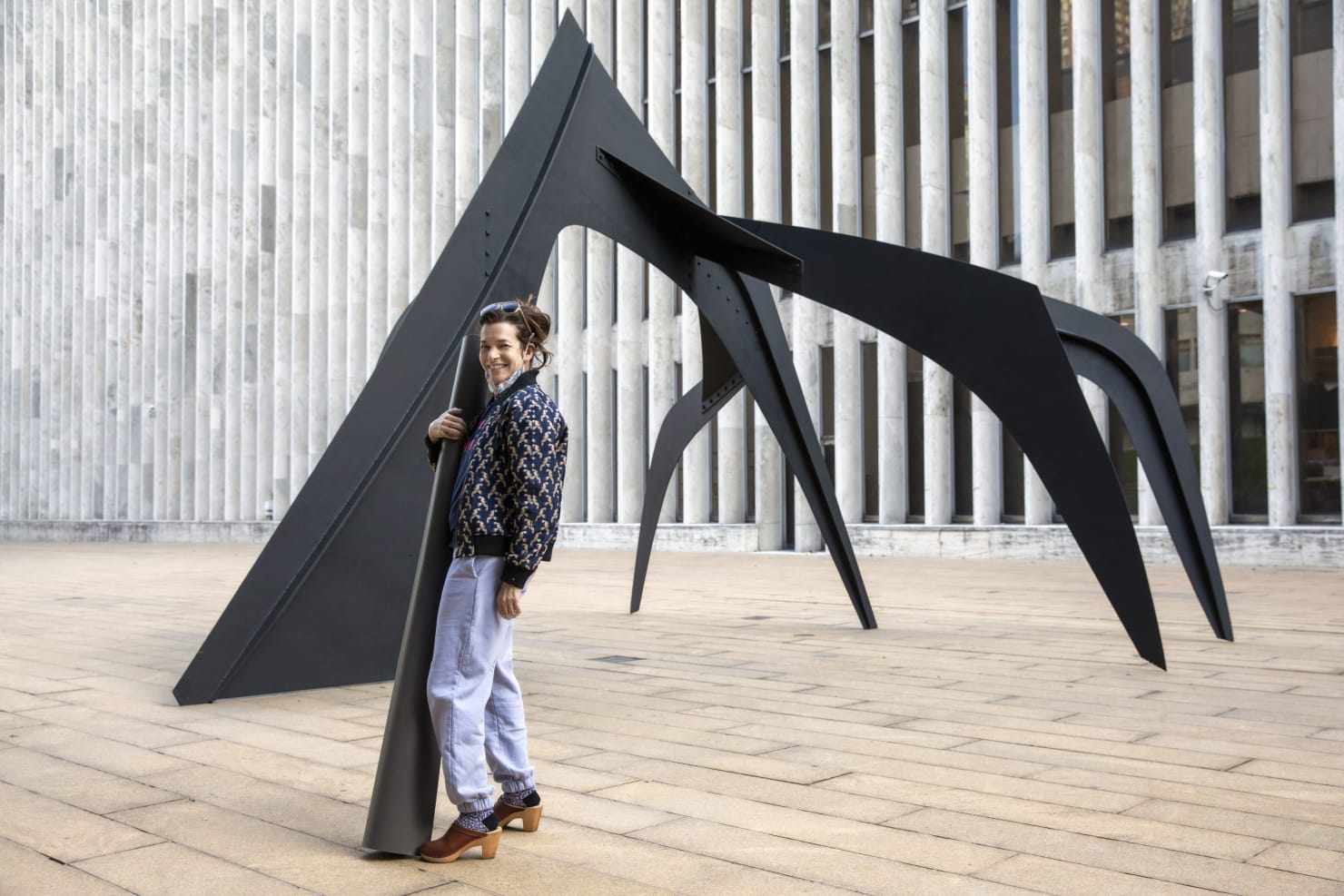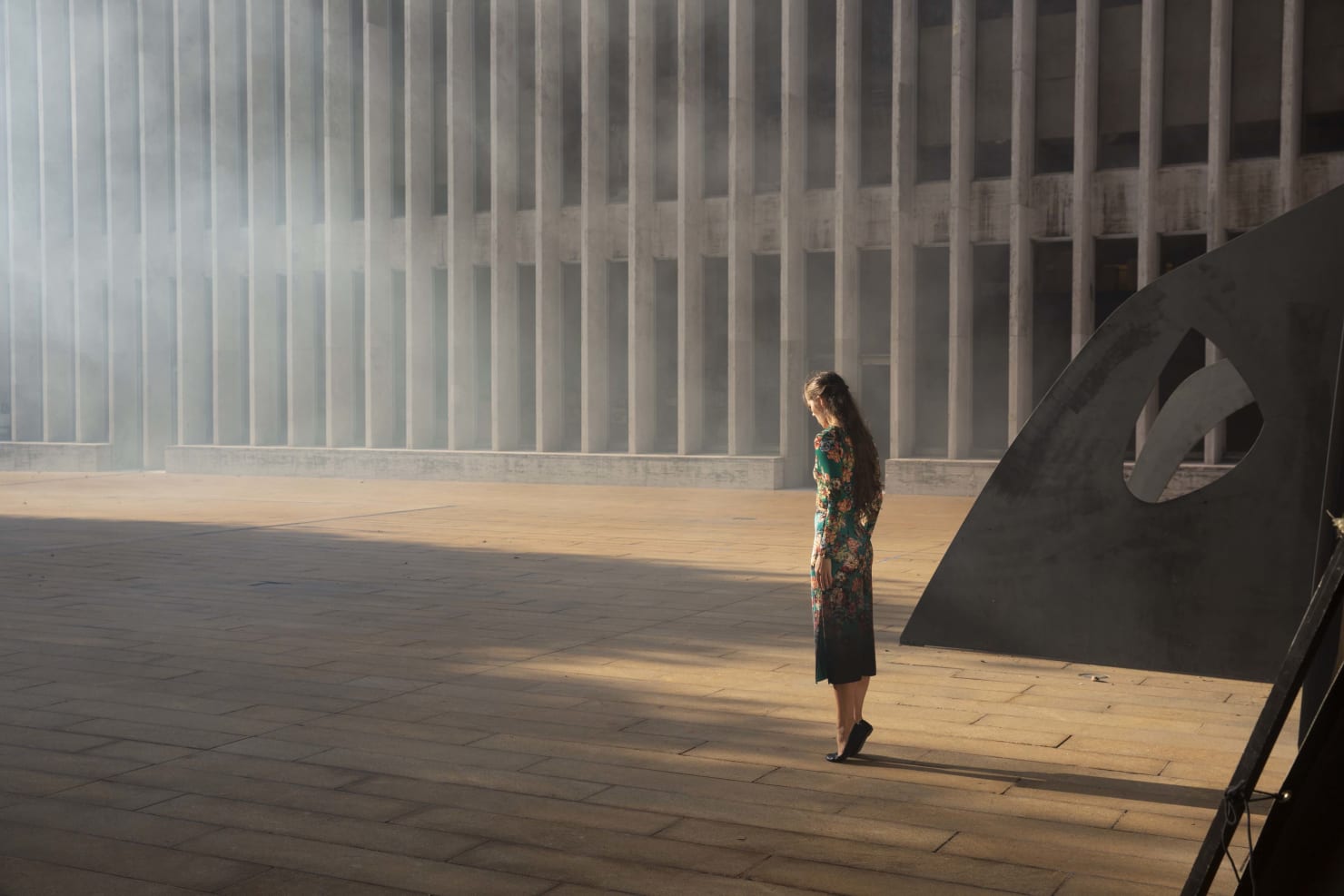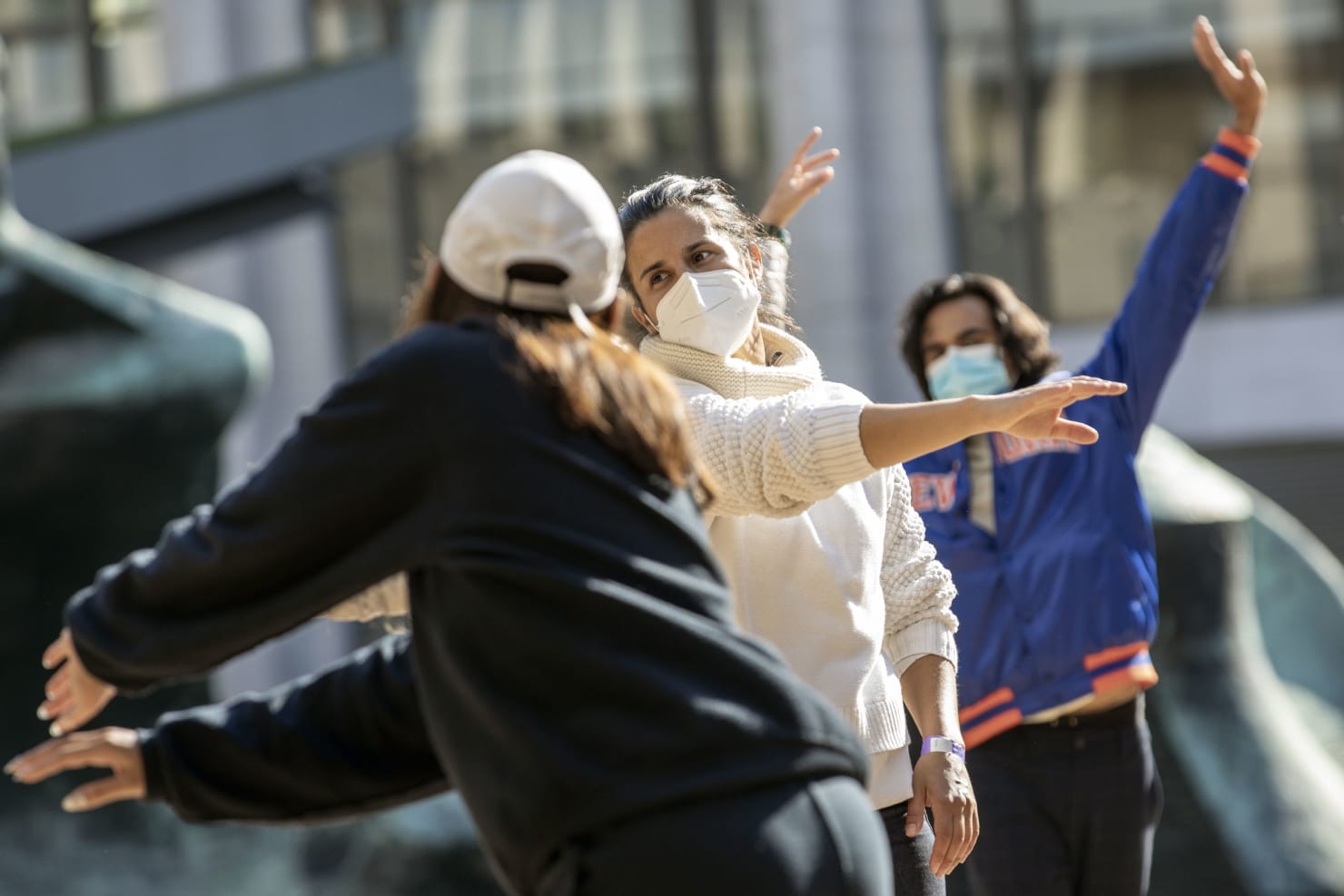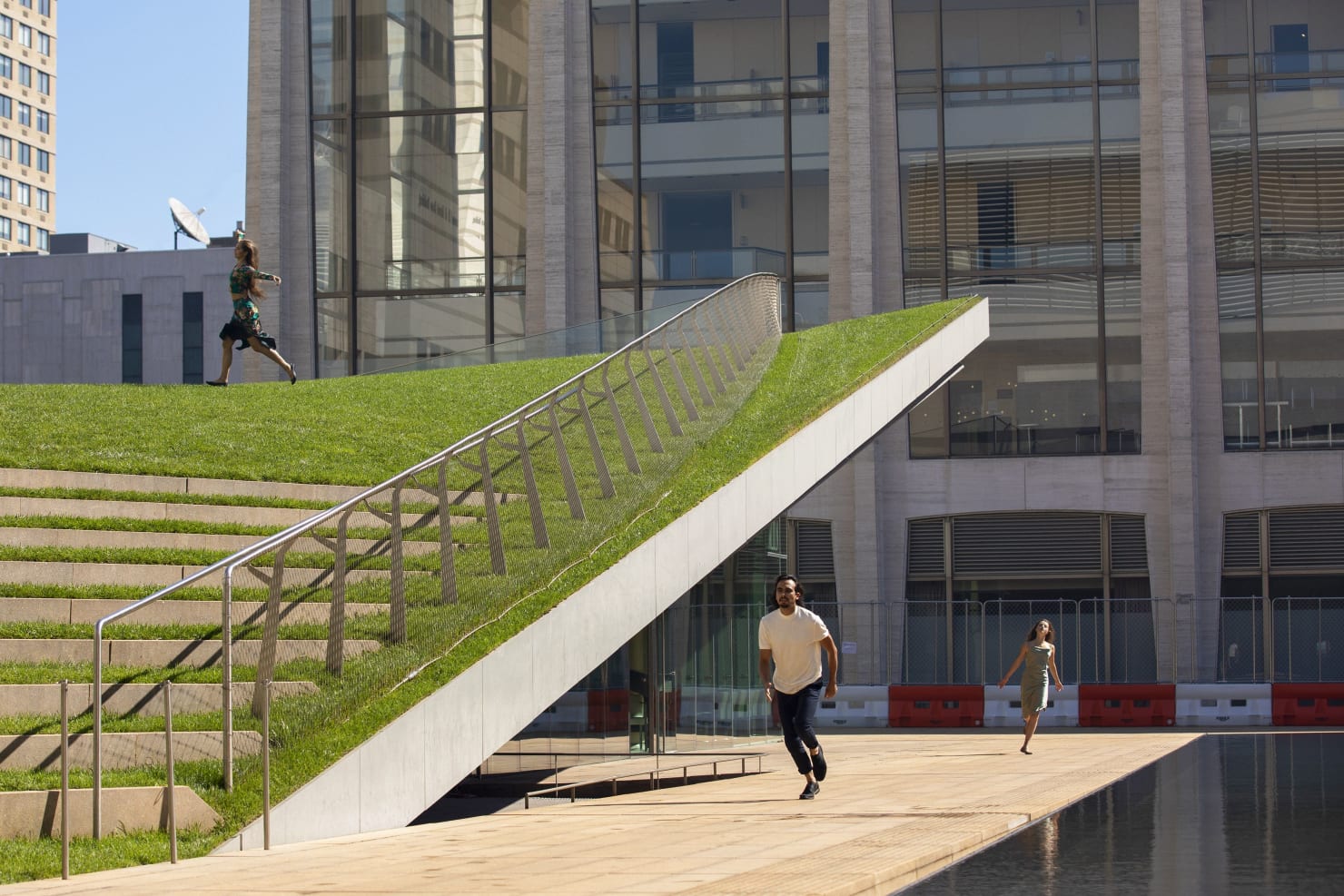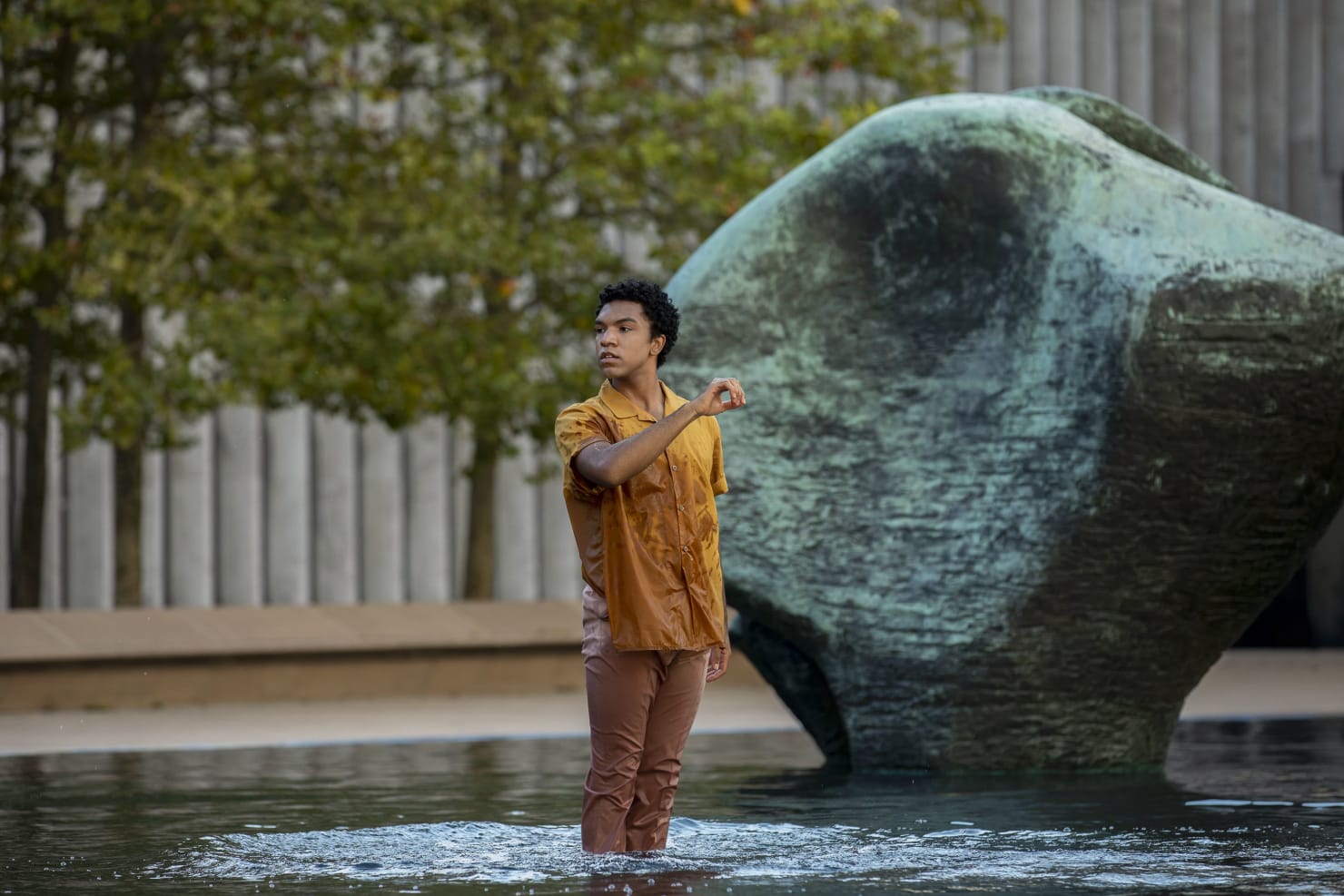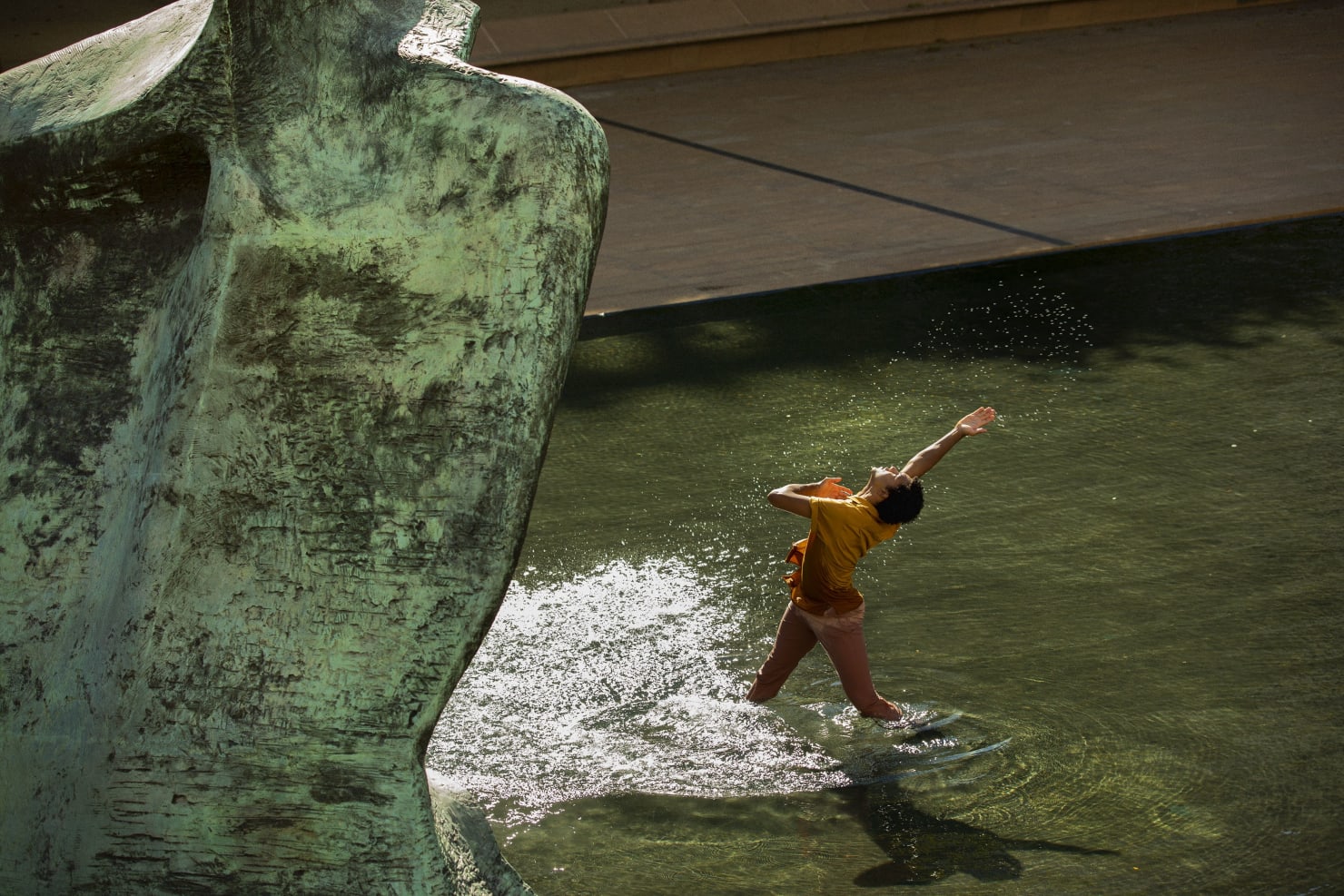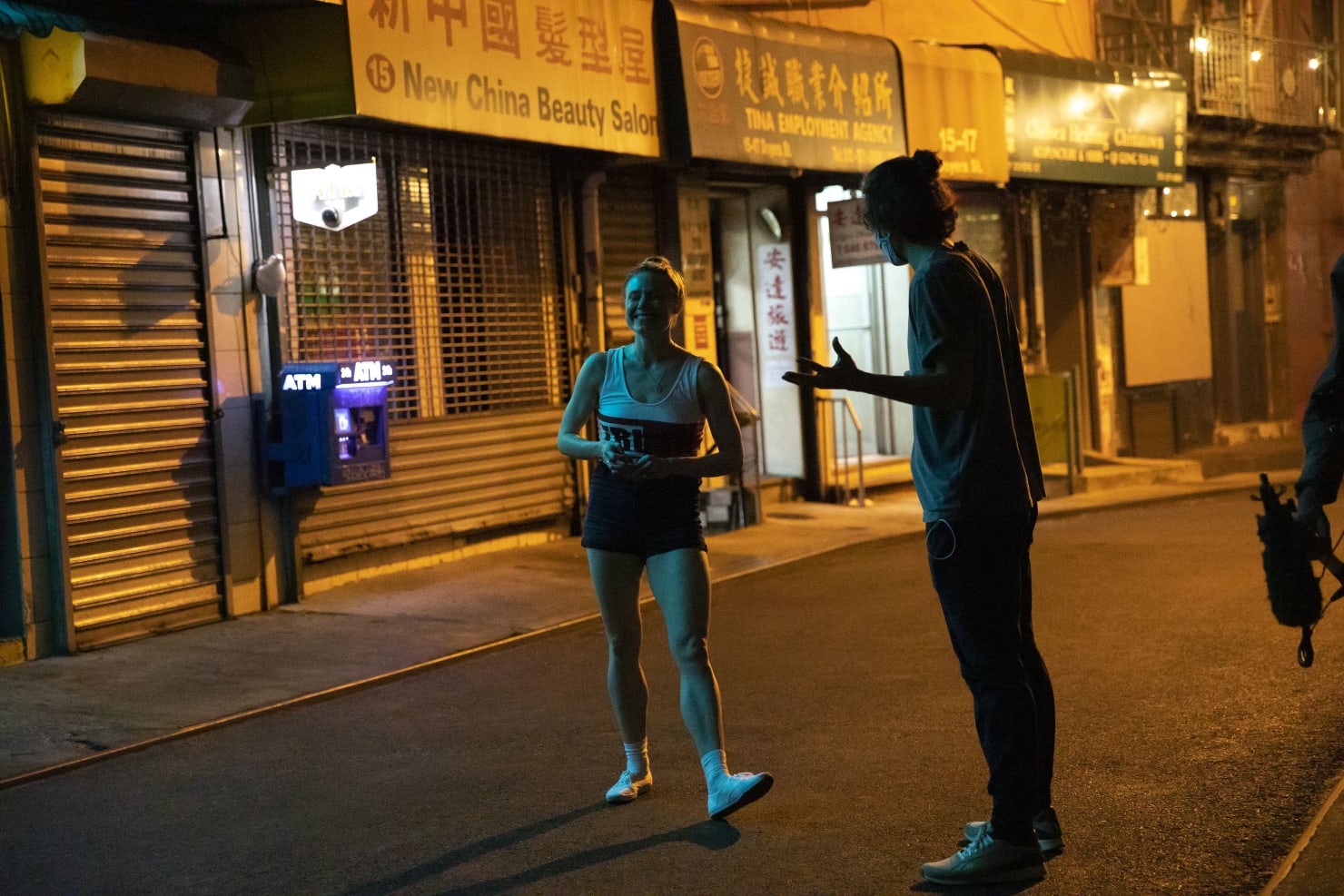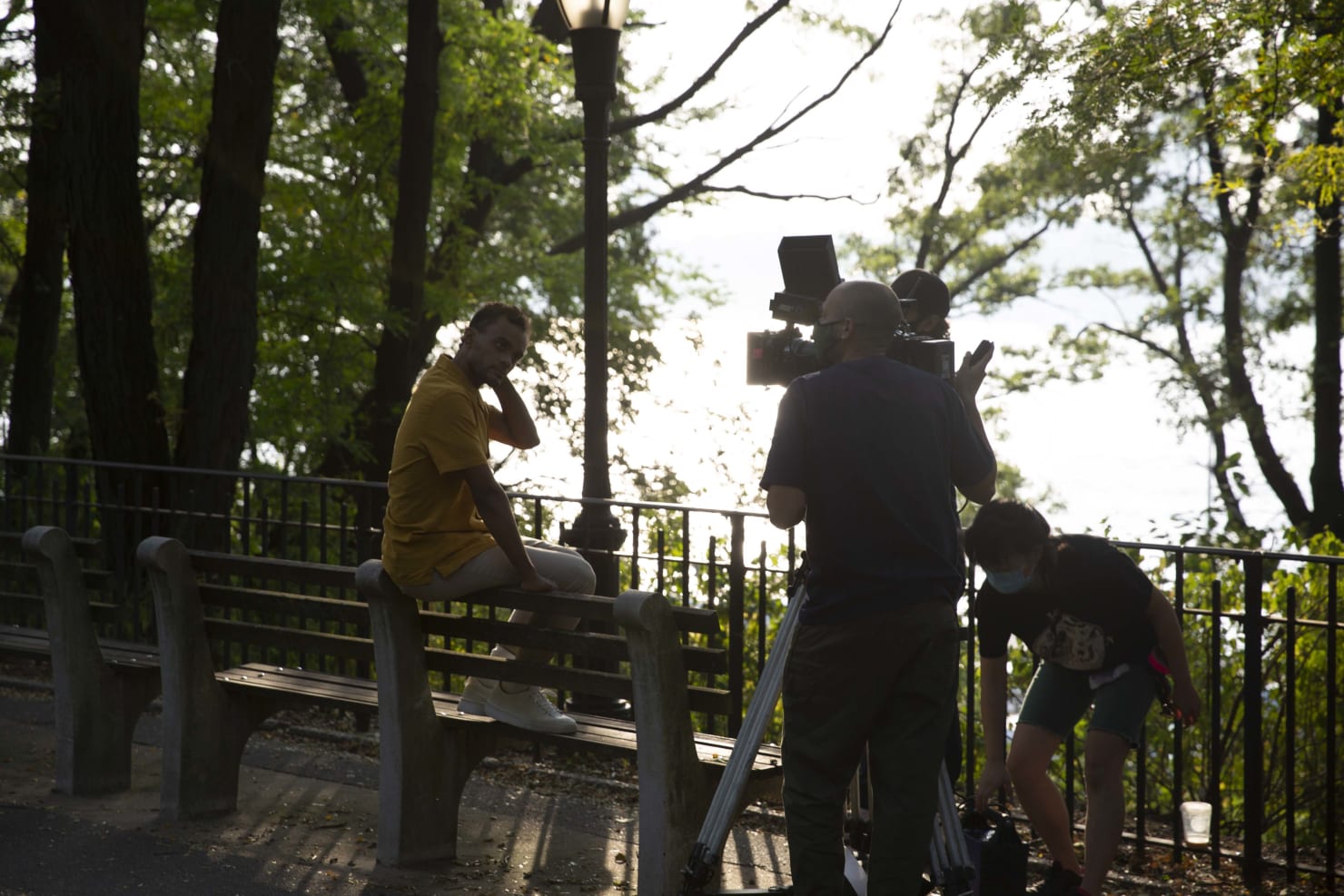
Five x Five
Behind the Scenes of New York City Ballet's New Works Festival
, October 22, 2020
Commissioning and premiering new ballets has been a priority for New York City Ballet since its founding, as an essential aspect of the Company’s role at the forefront of the art form. Despite the challenges currently faced by NYCB and artistic institutions worldwide as we continue to cope with the COVID-19 pandemic, our priorities have not changed.
As such, NYCB is presenting its first ever virtual New Works Festival October 27 through 31, a five-night celebration of contemporary choreography and the resiliency of the Company, its many artists, and the city it calls home.
We caught up with the NYCB dancers who performed these new works, who shared their experiences dancing within environments both familiar and new, collaborating with choreographers and each other virtually, and dancing amidst the ongoing global health crisis and the safety precautions it requires.
For her first work created on New York City Ballet, pixelation in a wave (Within Wires), choreographer and educator Sidra Bell used an untitled piece for strings commissioned from her father, Dennis Bell, as the score.
The music’s complex structure and shifting moods sets the tone for the four dancers—Soloist Peter Walker and Corps de Ballet Members Ghaleb Kayali, Emily Kikta, and Mira Nadon—in slick, contrasting black-and-white costumes.
Director Ezra Hurwitz captured the piece from a variety of perspectives, with dramatic angles and multiple levels highlighting the juxtapositions within the work itself. Kayali, Kikta, Nadon, and Walker danced on the level cement of the plaza surrounding the Henry Moore sculptures and reflecting pool, on the steps and atop the peak of the grass-covered hill next to Lincoln Center Theatre, and surrounding the Alexander Calder sculpture in front of the New York Public Library for the Performing Arts’ entrance.
GHALEB KAYALI: Going into this process I was a bit nervous since I had not been in a work setting since March, due to COVID. But getting to work with Sidra was a special experience for me. Her calming and inviting energy allowed me to feel at ease throughout the whole process.
EMILY KIKTA: I had never worked with Sidra before this, but had seen her work. I enjoyed working within her movement style and trying to use the right energy for it. I have felt so out of my body during this time, and creating shapes and exploring different movements again was very comforting.
MIRA NADON: Once the ballet was choreographed over Zoom, we each had a couple of in-person coaching sessions during which Sidra took the time to tailor the choreography to each individual. It was not until the second-to-last rehearsal that all four dancers were able to finally convene in the Plaza and put the whole piece together. Luckily, Sidra was very clear about what she wanted and efficient with her time, so the process was smooth and very productive.
GHALEB: We did notice that some peoples’ cameras caused a ‘mirror’ effect. So when we actually met as a group at the film site, we noticed that some people had ‘opposite’ arms and had to quickly adjust and clarify.
Nonetheless I am so grateful to live in a time where technology has allowed us to still create/meet/collaborate, even from our own tiny homes.
MIRA: Dancing on the Grassy Knoll was definitely the biggest challenge for me in this piece. The surface is sloped, uneven, and muddy, so it was harder to find my balance and get my bearings than it had been in studio rehearsals. I ended up realizing that being cautious or not fully committing to the steps in an attempt to stay balanced worked against me, so I tried to be as full-out as possible and just crossed my fingers that I wouldn't fall over!
EMILY: We were ripping up our shoes on the cement. Thankfully there was gaffer tape on set so that I could keep taping the bottom closed again to finish filming!
I’d never experienced Lincoln Center closed and I’ve never actually danced in the space outside of the theater. My whole adult life has been within those 3 blocks, from the School of American Ballet to the Company and to Fordham University. It was really nice to be in that space, dancing amongst all those buildings that feel so familiar.
MIRA: I have walked through the Plaza almost every day for the past five years, but I felt that through Sidra’s choreography and Ezra’s cinematography I had a renewed appreciation for the architecture and beauty of the space.
Something else that was unique about this experience for me was that Ezra and his crew were shooting on film, which meant we did not have unlimited opportunities to get each shot right. While it put more pressure on the dancers, I think it made the experience more comparable to the pressure of going on stage and having only one shot to—hopefully—nail it.
Just over a year has passed since New York-based choreographer Pam Tanowitz’s first commission for NYCB, Bartόk Ballet, premiered in May 2019. Her work for the New Works Festival, Solo for Russell: Sites 1-5, made on Principal Dancer Russell Janzen, is, appropriately, set to Alfred Schnittke’s Klingende Buchstaben (or Sounding Letters) for solo cello.
The ballet progresses like a day in the life of a professional dancer, from sunrise workouts in sweats, to rehearsals in more breathable attire, to a performance—in this case, on the cement stage of Lincoln Center’s Guggenheim Bandshell in Damrosch Park, just west of NYCB’s theater.
RUSSELL JANZEN: I love Pam. I think she is brilliant and innovative and an all-around good time. It was an absolute pleasure to work with her. We actually started building this piece back in March or April without any real end goal in mind. We would meet on FaceTime once a week and work together for about an hour. We built phrases using images, tasks, and writing exercises, each of us in our own apartments (and then later I was in my sister's garage). When Pam was asked to create a work for the Digital Fall Season she said that she already had material she had developed with me that she wanted to use, so we shortened and adapted the 10-to-12-minute-long solo we had made to accommodate the parameters of the commission. We rehearsed a few times on the Lincoln Center campus in person, both of us masked unless I was far enough away (like up on the hill or the stage). It was an entirely new process for me. I have never been this involved in the creation of the work, nor have I ever rehearsed over Facetime, nor have I rehearsed outside wearing a mask. All new things.
The pavement tore up my ballet shoes - I went through three different pairs, and dancing on my Marley on top of the sloped grass lawn was tricky, but nothing was unpleasant or overly difficult. I mean, dancing in general is a real challenge right now, so I struggled with some pretty basic balances/promenades that I would not have had as much trouble with if we were in the midst of what used to be a regular season.
RUSSELL: Usually when I dance at Lincoln Center I put on a full stage-face of makeup and I literally get hair sprayed on my head by Suzy Alvarez or Karla Elie (it’s these dark fibers that cling to each other and to my scalp) so that it looks like I have a full head of thick hair. But for this I wore no makeup and did nothing to my hair. This was just me, how I look offstage.
Everything about working with Pam is inspiring. She is thoughtful and open and generous - all things I aspire to be as a creative person. She really wanted the two of us to just be ourselves in the process, do what we were able to do at the time, and bring whatever we were interested in at that moment to the table. Usually ballet is an escape from the real world, and this felt very much of the world (or of our world) while we were making it, and I found that very inspiring.
Along with serving as the Artistic Director, Choreographer, and Founder of Brooklyn-based company GALLIM, Andrea Miller is currently working on a series of dance films and site-specific works, most recently this commission from NYCB.
Choreographed on Soloists Harrison Coll, Unity Phelan, Sebastian Villarini-Velez, and Indiana Woodward, Miller’s piece new song is set to Chilean musician Victor Jara’s “Manifiesto,” the plaintive melody of which gives the dancers’ fluid movement a dream-like mood. The dancers seem to flow in a mist-shrouded memory from the plaza, to the grove, to the water surrounding the Henry Moore sculptures in front of Lincoln Center Theatre.
SEBASTIAN VILLARINI-VELEZ: It was a joy to work with Andrea. I wasn’t that familiar with her work, so in a sense, it was like learning to speak a new language. I was relieved to come back to work on a type of movement that felt more organic and natural… What interested me the most about her approach to choreography is that it felt like we were having a conversation in the development of the movement and the progression of the choreography. It felt like drawing a continuous shape without any sudden stops or edges.
UNITY PHELAN: I feel like she really got to know each of us as dancers in such a short period of time. She tuned in to our strengths and challenged our weaknesses. She wanted the piece to be human and have real texture. It wasn’t about showing that we are all good dancers, it was about telling the internal story that was true for each of us. I was so excited to be working with her, and it was a wonderful process.
HARRISON COLL: I was told to film myself improvising to the music and then Andrea and her assistant could help me stitch the highlights together, and find more texture in the movement. It was such an empowering and fulfilling collaboration that made all of the dancers feel a new sense of ownership over our movement.
INDIANA WOODWARD: We were lucky enough to rehearse as a group outside—with masks on, of course. This is very different from our usual rehearsals that take place in a studio. We were able to feel the space we were going to perform in for 10 days prior to filming. It was special to dance among the trees and the pathways we had taken since we were all 15 years old, walking back and forth to the School of American Ballet and our dormitories.
SEBASTIAN: The masks were definitely the hardest part of the entire process, but we managed as best we could. There were days where we had to accommodate ourselves to the weather, but in a way, it influenced the choreography. Being outside forced us to be one with the elements, as clichéd as that sounds. You can see how the movement transforms as we navigate through each section of the piece and that it depends on where we found ourselves dancing. It was my first time performing in water [while dancing in the reflecting pool]. [It] resembled an age-old ritual. This element symbolizes so many things in different religious beliefs and it was interesting to channel that holistic energy through movement.
UNITY: It proved to be a little tricky because you really had to show the effort behind the movement in order to stay on the music and with the group. In the end it was great because showing the effort is also something beautiful.
UNITY: Having Ezra Hurwitz [as the director] was wonderful not only because he is a former professional dancer, but also because he spent time with us during the rehearsal process and knew the piece inside and out.
INDIANA: Ezra and Andrea wanted to do one continuous shot. Usually with a film you're able to stop and start and edit things together, but we would have to really commit to our movement. It was a challenge because none of us had performed in so long, but it also felt so wonderful to have the excitement and adrenaline that comes with performing.
HARRISON: [Miller] wanted this piece to bring elemental energy to the coldness of the concrete structures around us. Andrea called us her art warriors. She thought of us, in a way, as first responders in our efforts to keep the arts alive. We felt so grateful to have had the chance to dance during this pandemic. It was a homecoming for many of us to finally be allowed back into the Lincoln Center campus. It was also bittersweet because we didn't know when we would be able to dance at Lincoln Center next…
SEBASTIAN: It reaffirmed to me that Lincoln Center is an organic being, always evolving and inspiring its artists. The entire plaza can serve as a stage. The best part about being outside was bringing joy to the people that would stumble upon us while rehearsing. It showed us how essential art is in such difficult times.
HARRISON: We could tell people were starved for live performance and everyone kept telling us how happy our dance was making them. Usually we never encounter the public in the process of making the piece.
SEBASTIAN: The thing that inspired me the most was the music. “Manifiesto” is a song written and performed by Chilean artist Victor Jara. He was one of the victims of Augusto Pinochet’s dictatorship in Chile. In this song he ponders the reasons why he dedicates himself to singing. During this time of confinement I’ve been questioning my own reasons as to why I dance. Being forced away from the warmth of the stage really put things into perspective. I relate to Jara’s message that through art we can speak the truths that transcend the limits of spoken words. Dancing to a serene, almost ritualistic song inspired me to succumb and fully commit to the movement, expressing a deep desire to express my innermost emotions.
UNITY: One of the lyrics was, “I do not sing because I have a nice voice…” I believe this resonated deeply with each of us, we don’t dance only to become better or prove that we have talent. We dance because we have a calling, a need, and a desire to do it. The movements all developed deeper meaning as we kept working with Andrea, and the piece felt very personal by the time we filmed it.
Jamar Roberts, Resident Choreographer of the Alvin Ailey American Dance Theater, set his first NYCB-commissioned work Water Rite to “inflatedbyspinning” by multi-genre artist Ambrose Akinmusire, a piece for string quintet and flute performed by musicians from the New York City Ballet Orchestra for the film.
The work was made on Corps de Ballet Member Victor Abreu, who moves with a liquid grace and passionate force between the Henry Moore statues, splashing in the October-cold water of the reflecting pool throughout, and keeping time with the evocative music.
VICTOR ABREU: It was incredible working with Jamar. I googled him when I first found out that NYCB had commissioned him to make a work for the Company and loved how much movement he can make a dancer do. It was also great moving like that after being home for so long.
It was difficult and weird to rehearse virtually. Sometimes I could not tell if I was to use the right or left leg or to turn left or right. And when we actually had studio time, staying 6 feet apart felt like a huge boundary [we] dancers aren’t used to. And dancing with a mask while being sort of out of shape was very difficult.
VICTOR: This film shoot definitely posed more difficulty because I was dancing in water! It was a complete first. The water restricted how fast I could move my legs but it made me use the upper part of my body more. It was as if my chest and arms were dancing for my legs as well.
It took time but I figured out how freeing Jamar’s choreography was. No matter how exhausted I was at the end of the piece, it felt amazing to dance and to just let loose.
For his piece Thank You, New York, NYCB Resident Choreographer and Artistic Advisor Justin Peck celebrates the resiliency and multi-faceted beauty of New York City, the home of the Company.
Dancers Christopher Grant, Sara Mearns, Georgina Pazcoguin, and Taylor Stanley move through the cityscapes of Brooklyn Bridge Park’s basketball courts, the street in front of Nom Wah Tea Parlor in Chinatown, the Riverside Park greenway, and the view from the roof of David H. Koch Theater, all to a newly-commissioned version of Chris Thile’s “Thank You, New York”—words which resound throughout the piece’s vibrant movement.
CHRISTOPHER GRANT: Working with Justin is always exciting and super productive. It felt great to rehearse again after being away from the theater because of the pandemic.
SARA MEARNS: It was like working with a really good friend. It wasn’t choreographer/dancer… it was closer and more special. This just felt like we were in our own little world.
GEORGINA PAZCOGUIN: The experience was lovely. Justin and I have had the opportunity to not only share the stage together as dance colleagues and partners, but this surreal time of collaboration felt like the first time we had an ability to just be two artists in a room, creating. There was time to ask questions about eye line, potential camera angles, dissect movement quality, phrasing, and varying levels of attack. He really had me live in a space of less-is-more, which is something I’m absolutely exploring not only in my art but in my life in general.
SARA: [Justin and I] got some studio time but because it was being filmed outside in a street environment, one day we went to the road underneath Lincoln Center near a loading dock and did the whole rehearsal there. It felt strangely like this is what our new normal is. We both laughed but had a great time.
GEORGINA: I’m going to elaborate on what I touched on before and say I think this is the first time Justin and I have had the chance to create where the pretenses of “rehearsal” and “ballet” have been completely upended.
Yes, we wore masks (I choked on mine) and there were very strict health guidelines: in and out in an hour, no touching, no stereo use, etc. But I think what is more important to note is that in experiencing all those “restrictions,” as we refer to them, they didn’t inhibit. In fact without the common distractions, there was new space to be truly open to experiencing the ultimate importance of dancing and being in sync with another human. That’s Magic. It was a complete wow moment for me. That’s something simple that’s been taken for granted for so long. It’s usually a normal occurrence in my world. But in a land of Zoom delay, the act of being in sync with another human in this crazy tumultuous time in or outside of the studio is a rare occasion. That realization struck me at my core.
CHRISTOPHER: Once we got on set, the music, the choreography, and the energy around me brought to life something I am missing badly; rehearsal, performance, and that joy I get working with the team. I am yearning for the day when the theater doors open again and I can see the faces of the exuberant audiences. This project reminded me why I love to perform, and Justin has cemented for me a semblance of hope that I will be gracing the stage sooner than anticipated.
GEORGINA: I think the simplest explanation of the [film shoot] experience is instead of dancing to the [theater’s] Fourth Ring, the camera lens is capturing what's happening in my eyes, in my pinky finger, capturing the relationship of the sun to my clothes. Angles. Not the brothers Angle, but views from all angles are possible and can create an even more dynamic experience when executed correctly. Cinematographer Jody Lee Lipes and I reunited on the rooftop of the theater. It’s been 10 years since we worked together on the N.Y. Export Opus Jazz film. What a thrill! Matt the steadicam operator and I basically did a duet. He had to learn my choreography and time perfectly where to catch me according to the guidance of Jody and Justin. What amazing hands I was in. Dance on film means very many takes. It’s never a one-take and check the gate. It’s more like: “This will be take 14 of a performance-quality effort.” It’s an eat-your-Wheaties-and-plan-a-long-soak-after kind of day.
CHRISTOPHER: It was hilarious at times. We’d be filming, and pedestrians would walk through the set as if we were invisible, forcing us to stop filming until the space was clear again. This disruption occurred a few times as we watched people walk leisurely by in their masks, oblivious to their surroundings.
SARA: [Filming] was exciting and different because we were doing it at midnight in lower Manhattan in a hidden sidestreet. A place you would never see me in otherwise. It was perfect because we are using unusual spaces that we would never ever think of using before. And as always, as New Yorkers, we deal with the elements, the good and the bad. Were there rats running around the end of the street? Yes! Did we care? Nope! It’s New York. It was about knowing the elements and letting them inform what the experience was. We didn’t stress about anything, we just took it all in and let it be.
GEORGINA: I think Chris Thile’s revamped lyrics are the anthem for New Yorkers during this time. I really do love this city. She is so harsh, especially now, if you aren’t super rich or famous. But the grit of the people who stay with her are my kind of people.
SARA: It’s inspiring because it’s authentically Justin, it’s authentically New York, and it’s authentically what we are feeling and dealing with during this time. There is nothing fake about it. At all.



